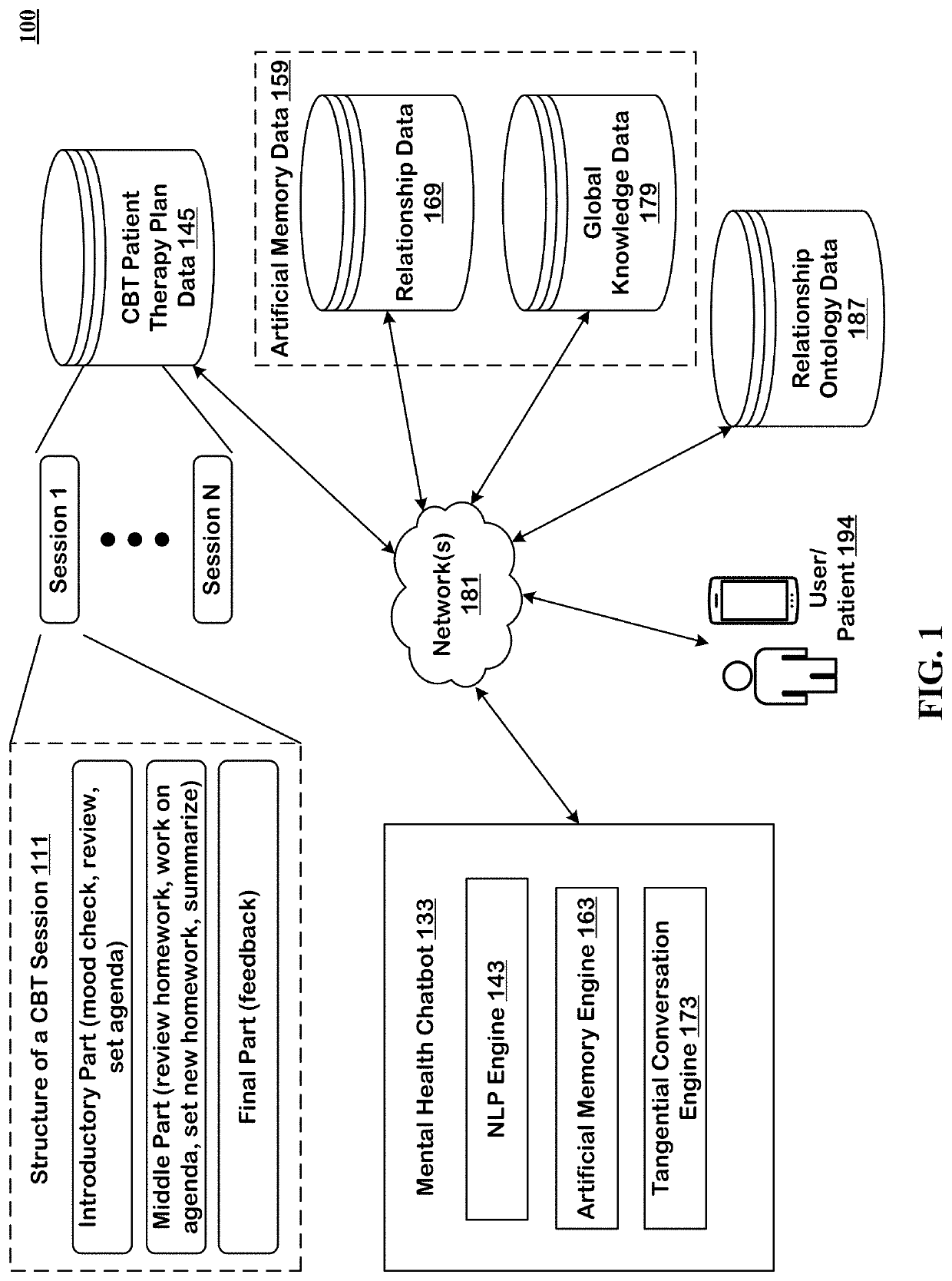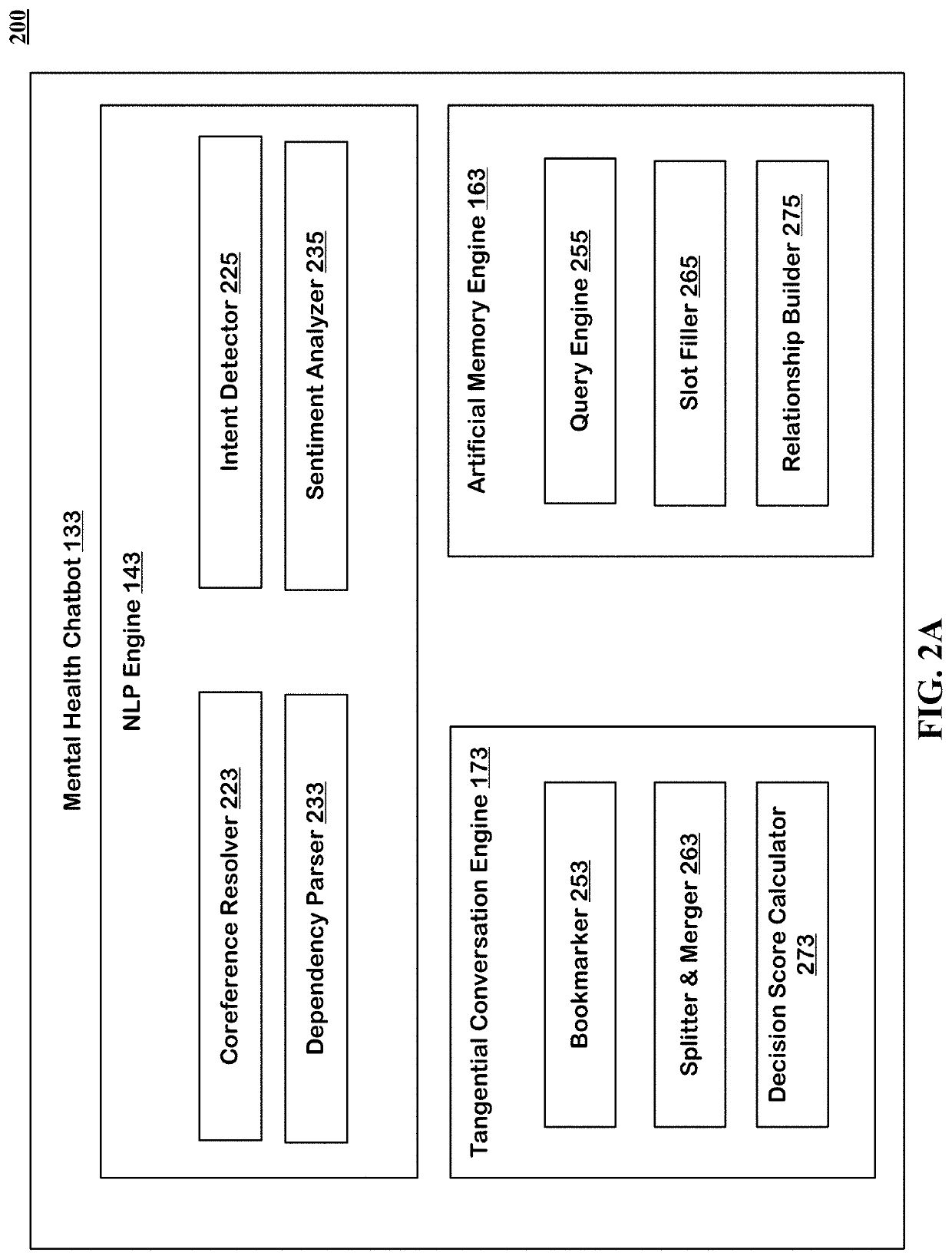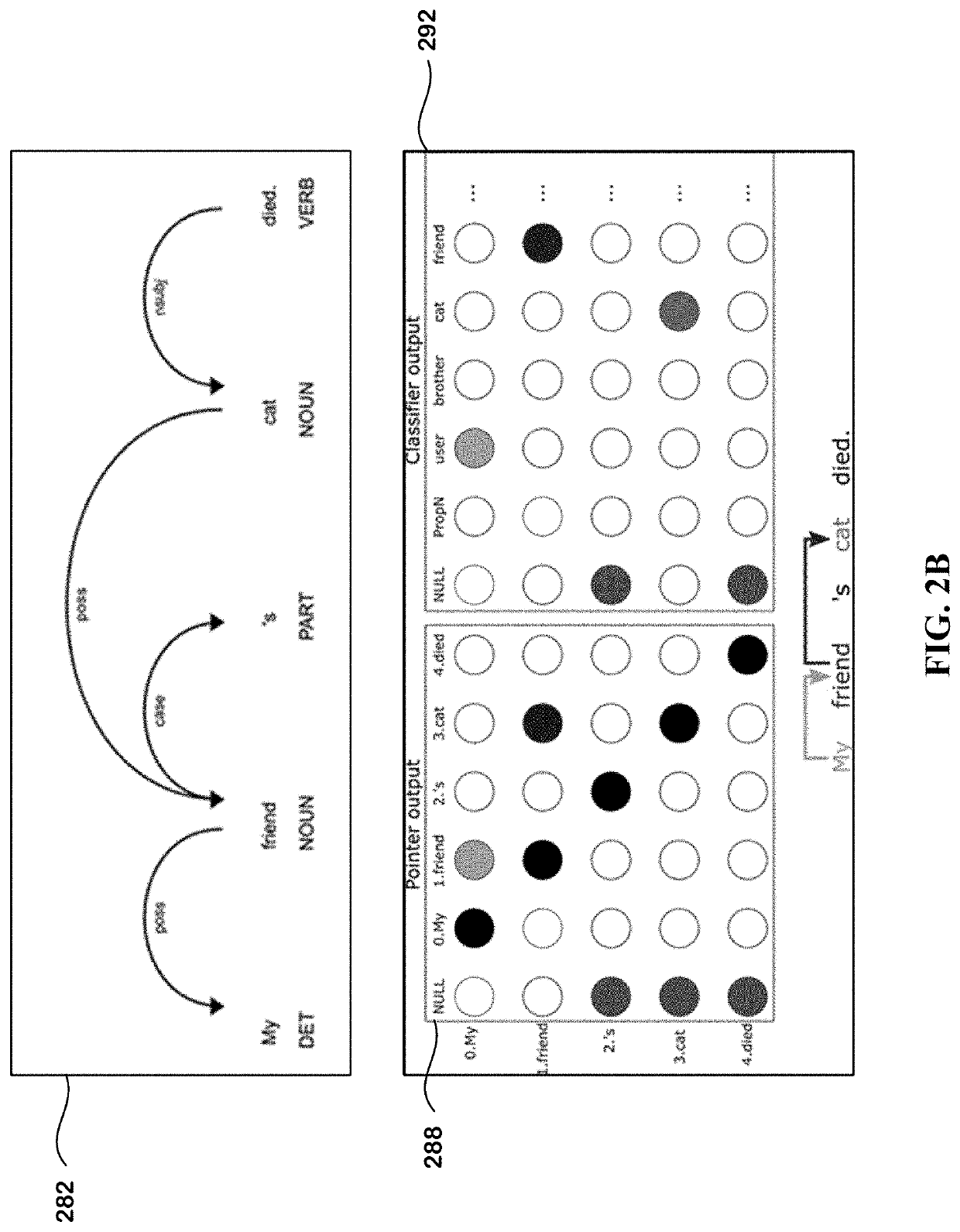Artificial Memory for use in Cognitive Behavioral Therapy Chatbot
a cognitive behavioral therapy and chatbot technology, applied in the field of artificial memory for use in chatbots, can solve the problems of destroying the therapeutic relationship between the patient and the chatbot, affecting the patient's recovery,
- Summary
- Abstract
- Description
- Claims
- Application Information
AI Technical Summary
Benefits of technology
Problems solved by technology
Method used
Image
Examples
example 1
ultiple Entities and Identify New Entity
[0145]FIG. 7A presents an example conversation in a CBT therapy session starting with step 701 in which the Serenity chatbot prompts “What's got you feeling negative?” to the patient. Note that in prior utterances to step 701, the patient may have said that she is feeling sad which caused the chatbot to send the prompt 701 to the patient. The patient responds “I had a long discussion with my daughter.” (703). The technology disclosed can detect an event (discussion) involving the entity which is extracted from the artificial memory. The user's utterance initiates the query to artificial memory (or Mercer memory) 705. The system forms a query (user)-[daughter]->( ) to extract the entity related to the patient with a relationship role “daughter”. The query returns two results Mary and Jessica (707). As the query returns a plurality of entity nodes connected to the patient root node by the selected relationship edges, the chatbots response (709) ...
example 2
g Relationship Role Using Entity Name
[0147]FIG. 7B presents an example in which the patient provides an entity's distinguishing name to the chatbot in her utterance. The conversation starts with a prompt “Hi [name], what's going on? (751). The patient responds, “Anna gave me some career advice. She is so great!” (753). The system uses the patient's utterance to access the artificial memory to extract more details about the entity mentioned in patient's utterance (755). The query (user)-[boss]-(Anna) returns the relationship “boss” for the entity Anna mentioned by the patient (757). The chatbot uses the query response (759) to send a prompt to the patient “Sound like you're feeling positive towards your boss!”.
[0148]The patient then continues the conversation by uttering, “Yep. But I'm not getting along with Bill” (763). The system uses the input from the patient (765) to query the artificial memory. The query (user)-[coworker]-(Bill) returns the relationship of the entity “Bill” to ...
example 3
ng Content in Artificial Memory
[0150]Patient: “My cat passed away.”[0151]Entity Extraction: (user)-[cat]->( ) matches a unique node. Extract the name “Mittens” from the entity's “givenName” slot.[0152]Slot Filling: The system recognizes the relationship “cat”->“died” indicates that the slot alive is filled in as False on the node extracted from (user)-[cat]->( ). Sentiment analysis is performed and an edge is created / updated between the user and cat node with negative sentiment (sadness).
[0153]Serenity: “I am sorry to hear about Mittens. Here are some tools you may find helpful in dealing with loss.”
PUM
 Login to View More
Login to View More Abstract
Description
Claims
Application Information
 Login to View More
Login to View More - R&D
- Intellectual Property
- Life Sciences
- Materials
- Tech Scout
- Unparalleled Data Quality
- Higher Quality Content
- 60% Fewer Hallucinations
Browse by: Latest US Patents, China's latest patents, Technical Efficacy Thesaurus, Application Domain, Technology Topic, Popular Technical Reports.
© 2025 PatSnap. All rights reserved.Legal|Privacy policy|Modern Slavery Act Transparency Statement|Sitemap|About US| Contact US: help@patsnap.com



